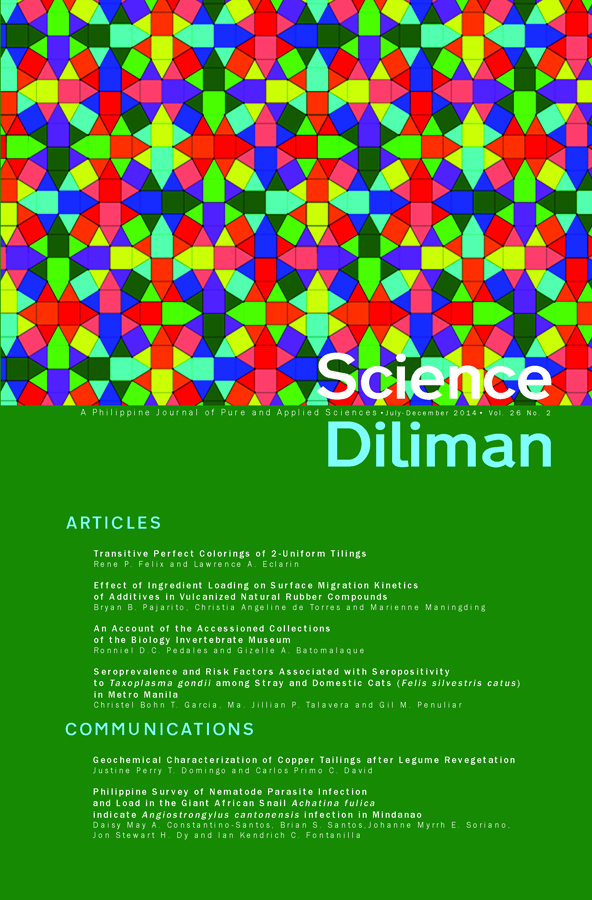Philippine Survey of Nematode Parasite Infection and Load in the Giant African Snail <em>Achatina fulica</em> indicate <em>Angiostrongylus cantonensis</em> infection in Mindanao
Abstract
Achatina fulica is a ubiquitous land snail commonly found throughout the Philippines. As a generalist feeder and being able to survive in a wide range of habitat types and conditions, the snail can easily establish itself in a new area after introduction. It also acts as host to a variety of parasites, including nematodes, which may accidentally infect humans. In this study, A. fulica individuals from 13 areas in the Philippines were sampled and analyzed for nematode infection rate and load. Of the 393 individuals sampled, 80 (20%) were found to be infected, with 5049 nematodes isolated. The infection rates and parasite load were highly variable. Overall, the parasite load ranges from 1 to 867 per snail. Representative nematodes from A. fulica from Plaridel (n=8) and Davao City (n=26) in Mindanao were subjected to DNA extraction, PCR amplification, and sequencing of the SSU rRNA gene, which is the universal barcode for nematodes. Sequences successfully matched with the dog lungworm Oslerus osleri for the Plaridel nematodes and the rat lungworm Angiostrongylus cantonensis for the Davao City nematodes, respectively. The latter is known to infect humans and can cause eosinophilic meningoencephalitis. This study presents the first report of A. cantonensis in A. fulica from Mindanao and raises a public health concern.
Keywords: Achatina fulica, nematode, Philippines, SSU rRNA, Oslerus osleri, Angiostrongylus cantonensis



